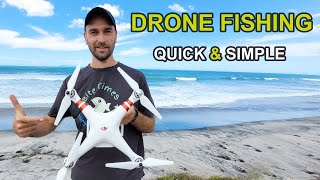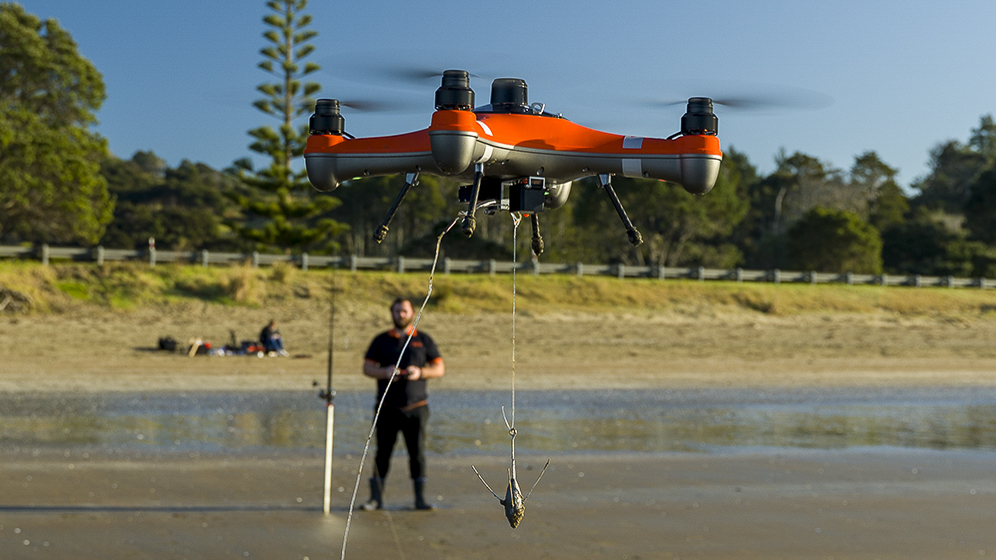
New Zealand has discovered a new way to fish: drone fishing. This innovative new technique uses drone technology to open up new fishing opportunities. Drone Fishing NZ has a number of top retailers that can sell you a DJI or Splash drone. You can also find Splash drones and GoFish cameras, as well as custom-built fishing rigs.
Aerokontiki Drones
Sharkan offers a Fishhawk, a fishing drone that captures the action better. The stabilized camera of the drone can take 12-megapixel photos as well as 4k UHD videos at 30 frames per seconds. The videos can be viewed on your smartphone. The drone offers a range of good transmission and flight time, as well as a spare batteries that can be charged.
Mobula
Mobula drones are specifically designed to fly in the water. It is buoyant and IP56-rated. This means that it can withstand wind speeds up to 20 knots. It has safety features built in, such as an automatic return to home, payload release, and three different release mechanisms. You won't have to worry about your drone getting lost, as it will automatically return to the water if its battery is low.
Banks'
A fishing drone is a popular choice for anglers and other sports enthusiasts. However, the use of a drone has come with its own set of problems. A drone is not designed to fish in deep water. Another problem occurs when a drone crashes at the same place twice. The video footage you receive can be questioned and you shouldn't trust it.

SplashDrone 4
Swellpro has designed the SplashDrone 4 with a brand new float platform for water sports and recreational purposes. It's ideal for fishing parties, all kinds of water activities and is made from corrosion-resistant materials and high-quality ABS to withstand any conditions. The SplashDrone 4's patented Smooth+ flight control system gives the user complete control over the drone, which helps keep it stable in any situation. Its advanced technology enables it to capture every angle of the sky.
Drone for Fisherman
New Zealand Fisherman Drone Fishermans are in for an amazing treat. For drone fishing enthusiasts, snappers are highly prized. They are beautiful to look at and taste great! These fish can be found off the coasts of the North and South islands, and they often congregate in large numbers during springtime during their spawning season. These fish can be caught in the summer, but they are also plentiful in the fall.
Flying a drone
There are a few things you can do to make your drone fishing trip in New Zealand a success. The law should be understood. It's illegal to fly a drone over any marine life or within 500 meters of a marine mammal. You'll also need to be mindful of your surroundings when flying your drone, as you don't want your expensive drone confiscated or damaged.
Payload of a drone
The payload of a drone that you use for fishing is something you should be aware. You will need to find a drone with a payload capacity to carry heavy fish and enough endurance to fly for a long time. If you plan on using your drone only for a few minutes, chances are you won't catch enough fish to make it worthwhile. New Zealand's drone fishing technology is improving.

FAQ
What are the rules of operation when using drones?
The FAA must register your drone. This registration process includes submitting information about the device, including its weight, size, battery capacity, and operating frequency. The FAA will issue you an identification number.
Can someone spy on you with a drone?
Yes, anyone can fly a drone and spy on you. It is important to be aware of drones and to avoid any areas they may fly. Do not hesitate to call 911 if a drone is seen flying.
What is the law on drones flying over private property?
New rules were recently published by the FAA regarding commercial drone flights. These rules apply only to UAVs weighing less than 55 pounds and flying below 400 feet above ground level. Commercial operators must register with FAA to receive a license. They must also obtain permission from local authorities if they plan to operate in restricted areas, such as airports.
Statistics
- According to Indeed, a drone pilot gets paid $25.73 per hour on average in the US. (dronesgator.com)
- According to industry research from ZipRecruiter , there are 10 cities where the typical salary for a Drone Pilot job is above the national average. (dronesgator.com)
- With the top 10% making over $100/h and the bottom 10% making as low as $10/h. (dronesgator.com)
External Links
How To
How to Fly Drones at a Beginning Level
A drone is a remotely-controlled aircraft that is used for aerial photography and surveillance. The technology behind drones has been around since World War II. DJI introduced their Phantom series of quadcopters in 2010, but commercial use only began in 2010. There have been many drones made since then. These range from beginner-friendly drones like Parrot AR Drone 2.0 to more advanced multi-rotor craft like DJI Mavic Pro.
There are many ways to fly a drone.
-
Remote control - This method uses a control device attached to your hand, which enables you to steer the drone through its flight path. There are two main types, On/Off switches (like radios) and joysticks.
-
Manual Control – This method lets users remotely control the drone by using a smartphone app. The app will provide instructions and help you to locate the drone.
-
Autonomous Flying - This allows the drone to take over all of the piloting duties. It basically flies autonomously without any human intervention. For the autonomous flight to occur, the drone must have a built-in camera and sensors capable of capturing images and data.
-
Triggered Flight - This method is similar to manual control, except the pilot manually sets up a preprogrammed route, and the drone follows that route until it reaches the endpoint. Once the programmed route is completed, the drone lands automatically and returns back to the base.
-
Landing Gear - Some drones come equipped with landing gear that allows them to land safely if they lose power or run out of battery during flight.
-
Goggles-Some pilots use goggles to protect their eyes from debris during operations.
-
Camera - Some drones are equipped with cameras allowing you to capture photos and videos from above.
-
Obstacles – Some drones have obstacle avoidance systems that stop them from colliding with obstacles.
-
Speed - Some drones reach speeds exceeding 40 mph.
-
Battery Life - Most drones last between 20 and 3 hours depending on how much power they have.
-
Range - Some drones can travel upto 30 miles depending on their models.
-
Power source: Some drones will require an external power source while others can be powered by internal batteries.
-
Weight - Some drones can be as light as 1 pound while others can reach 4 pounds.
-
Size - From small drones that can be carried in the palm of one's hand to larger drones that weigh over 50 pounds, drones come in a variety of sizes.
-
Price - Drones come in a variety of price categories, including high-end models which can run into the thousands and low-cost options that can start at $100.